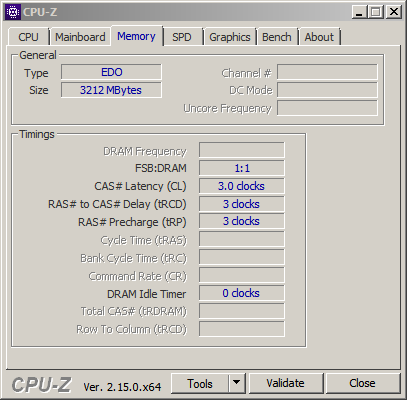
MEMORY FREQUENCY
3
of Total Submissions
2797.8 MHz
of Total Score
Thursday, 01 January 1970 07:00:00 | Updated at 1 week ago
About Memory Frequency
Memory Frequency is a test to measure the clock speed of RAM or system memory. Memory frequency (usually in MHz) refers to how fast the memory can transfer data to the CPU and other components. This test provides insight into how many data transfers per second the system memory can perform at a given frequency, which has an effect on overall system performance especially in applications that rely heavily on memory speed.
Setting the memory to a higher frequency can provide improved performance in applications that require a lot of data to be processed in a short period of time, such as programming applications, video processing, or graphics-intensive games. However, keep in mind that increasing the frequency also depends on the capacity and capabilities of the motherboard and memory chips.
Benchmark Memory Frequency Chart Ranking
The following graph displays the hardware performance ranking based on benchmark results using Memory Frequency. The data is organized from highest to lowest score for easy visual comparison between devices. You can hover over each bar to view the score details and associated hardware name.
Benchmark Memory Frequency Table Ranking
The following table presents hardware rankings based on benchmark results using Memory Frequency. The table format provides detailed views such as device name, score, number of submissions, as well as links to test results. It's perfect for those who want to see detailed data and easily search or filter.
| No. | Hardware | Submissions from Memory Frequency |
|---|---|---|
| 1 | DDR4 3200MHz SODIMM | 1596.0 MHz |
| 2 | DDR3 1333MHz SODIMM | 664.9 MHz |
| 3 | DDR3 1066MHz SODIMM | 536.9 MHz |
